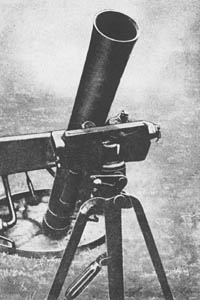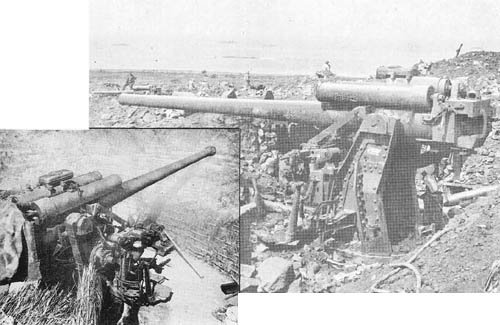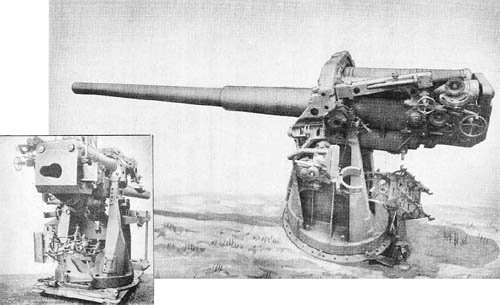
The Gr. W. 42, now being manufactured in Germany, closely resembles the Russian 12 cm mortar after which it is modeled. This weapon is of conventional design, consisting of a tube, base plate, and bipod. The bipod is clamped to the center base of the tube; the base of the tube fits into the circular base plate by a ball and socket joint. Elevating and traversing gears are operated in the usual way by small handles located at the top of the bipod.
The mortar may be either percussion or trigger-fired. The trigger mechanism can be set at “Einzel-Feuer”—single shot, or “Dauerfeuer”—continuous fire.
A two-wheeled, rubber-tired carriage is used for transport. Hooks on the upper surface of the base plate engage with U-shaped pieces attached to the carriage, and a clamp secures the barrel to the trail of the carriage. The bipod is apparently carried clamped to the mortar ready for action.
Three types of high-explosive bombs are fired from the Gr. W. 42 as well as Russian ammunition captured by the Nazis.
SPECIFICATIONS
| Caliber | 120 mm (4.7 ins.) | |
| Weight in action | 606.1 lb. | |
| Weight (including carriage) | 880 lb. | |
| Length of barrel (including breech piece) | 6.12 ft. | |
| Length of bore (approx.) | 5 ft. | |
| Width of carriage | 5 ft. | |
| Range (maximum) | 6,560 yds. | |
| Elevation | 45°-80° | |
| Traverse | 3½° right and left at 45° elevation |
German: p. 106

